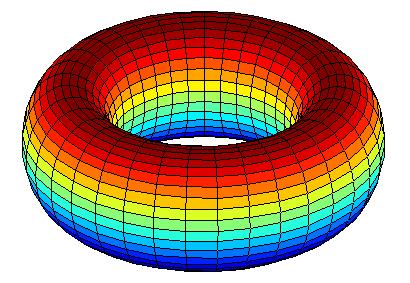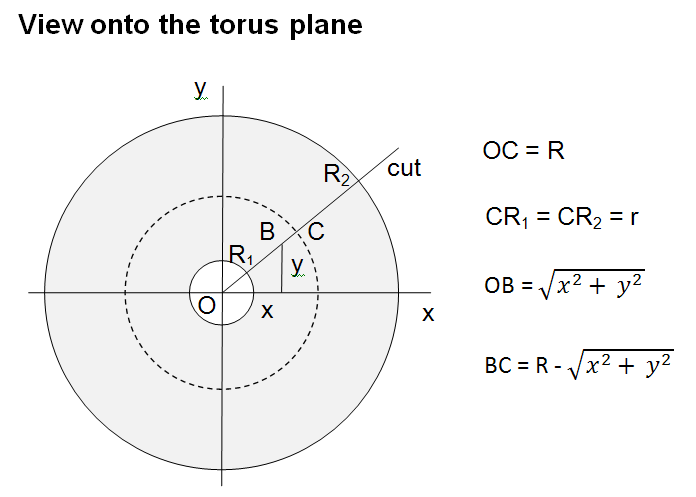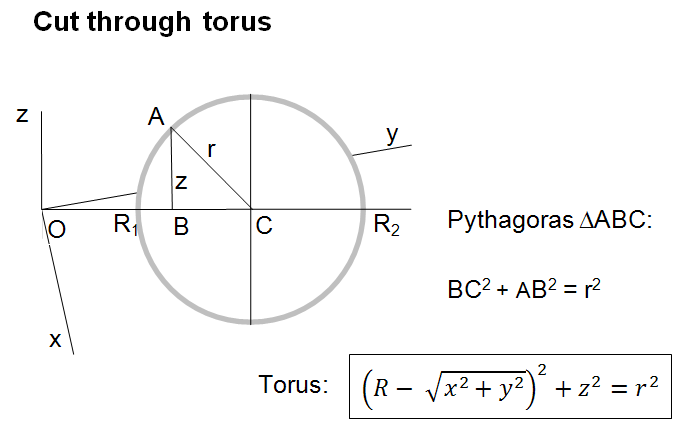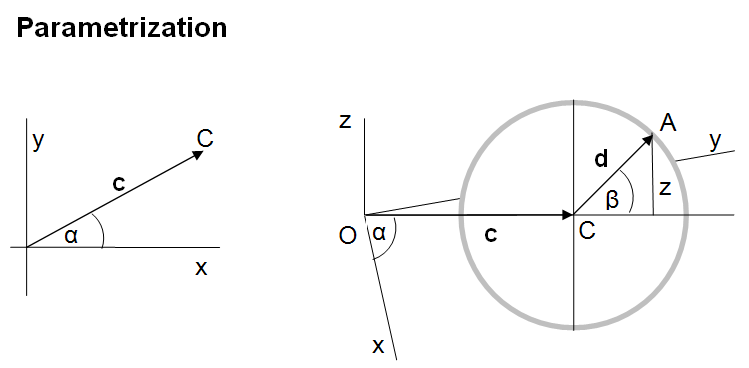Torus
Definition
Take a hollow cylinder (a tube), bend it to a ring, connect the two open ends and you get a torus:

Another construction is to revolve a circle in three dimensional space about an axis coplanar with the circle (Wikipedia). The torus is in a standard, canonical position if the circle is perpendicular to the x/y-plane and is rotated about the z-axis.
Implicit Equation
The implicit equation of the canonical torus with inner radius r and revolving radius R is:
This formula is derived in the figures below.


Parametric Equation
Torus is a 2-dimensional surface and hence can be parametrized by 2 independent variables which are obviously the 2 angles:
- α = angle in the x/y-plane, around the z-axis, 0° ≤ α < 360°
- β = angle around the x/y-plane, 0° ≤ β < 360°

The vector c from the origin O to the inner center C of the torus is:
The vector d from the inner center C of the torus to the point A on the torus surface can be written as the sum of its orthogonal components:
The vector a = (x, y, z)T from the origin to an arbitrary point A(x, y, z) on the torus surface is:
By substituting (2) and (3) into (4) we get the parametric equations of the torus:
The parameters α, β are usually denoted by u, v, respectively.
Octave Program
An Octave program (see also SourceForge) for drawing a torus is below (similar to Matlab):
function f = torus(r, R, numGridPoints)
gridPoints = linspace(0, 2*pi, numGridPoints);
[u, v] = meshgrid(gridPoints, gridPoints);
x = (R + r * cos(v)) * cos(u);
y = (R + r * cos(v)) * sin(u);
z = r * sin(v);
surf(x, y, z);
end
